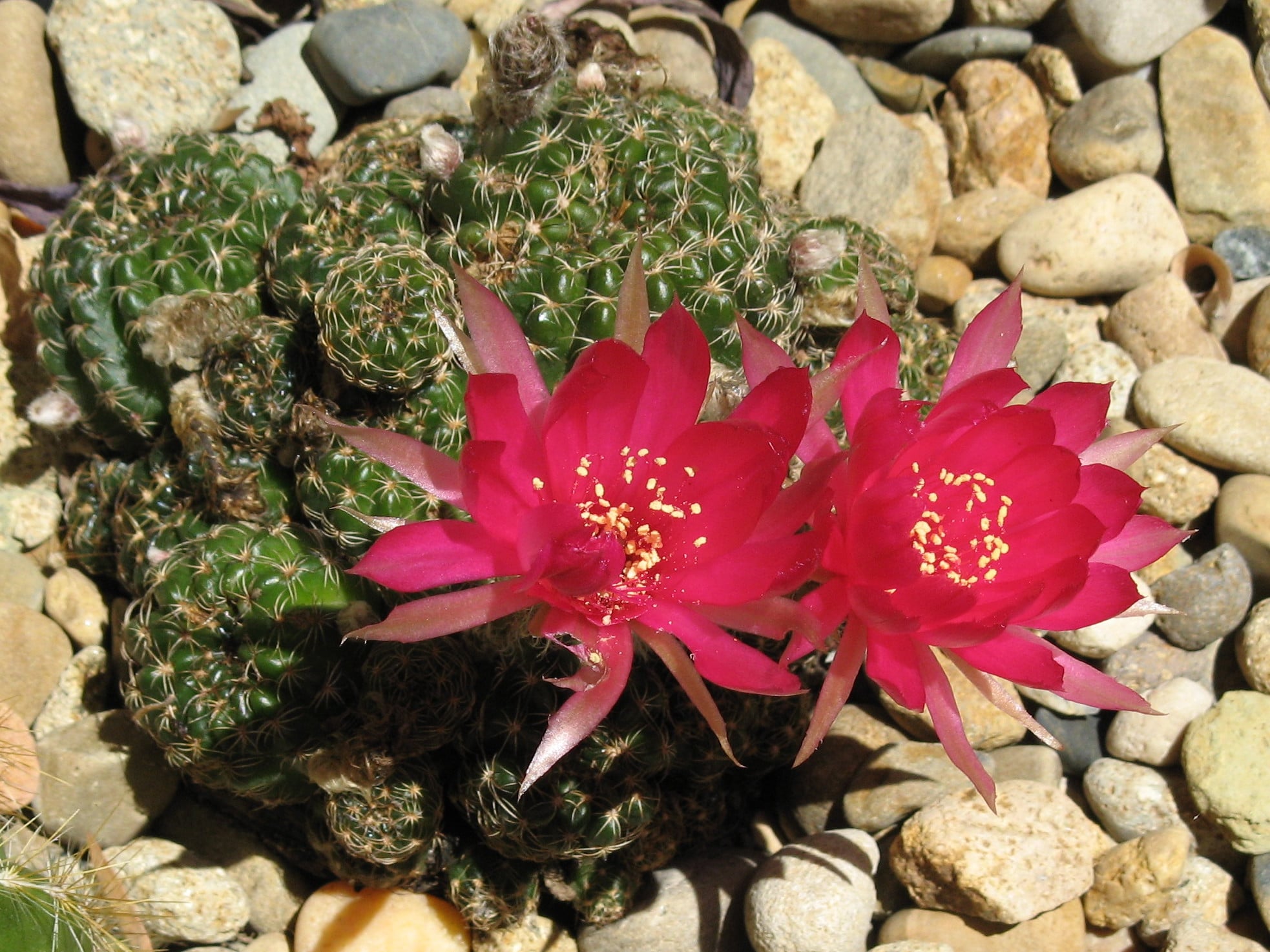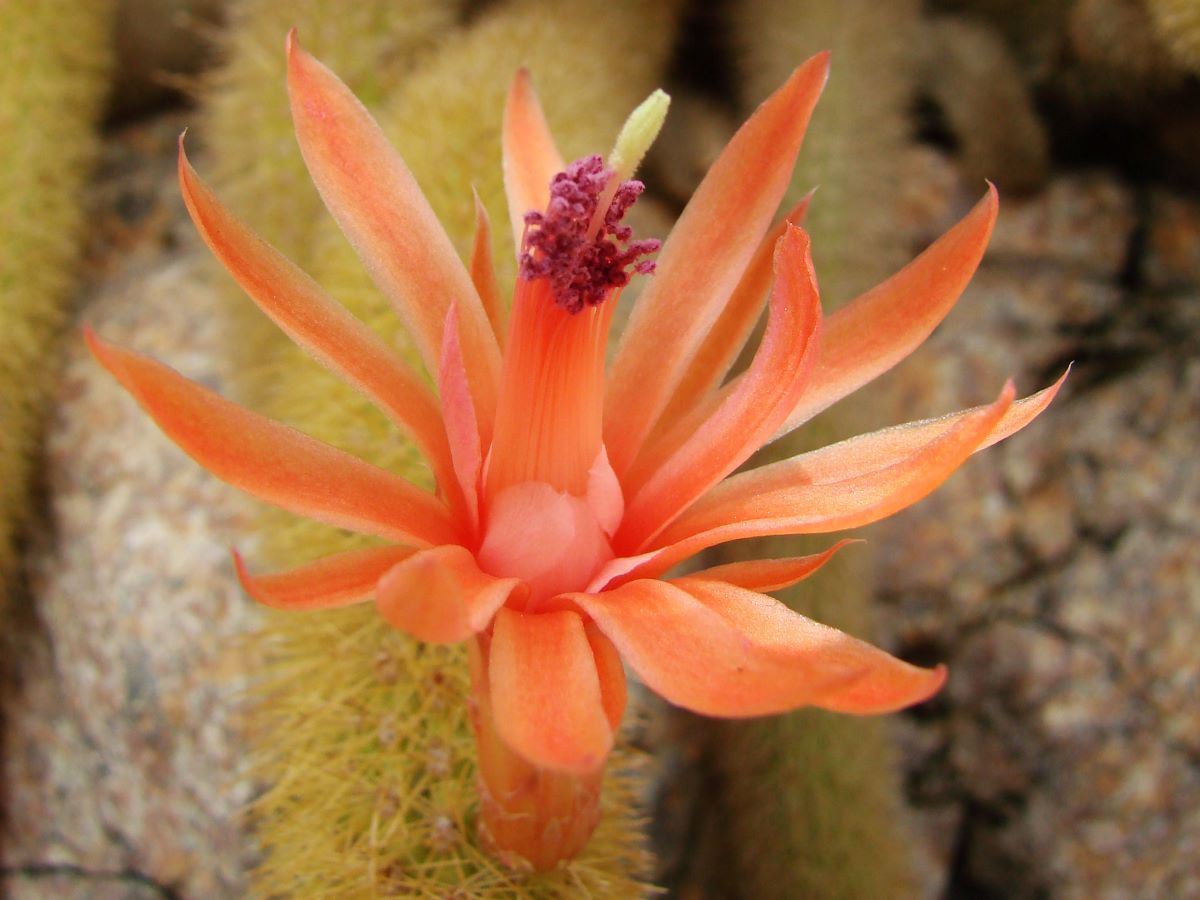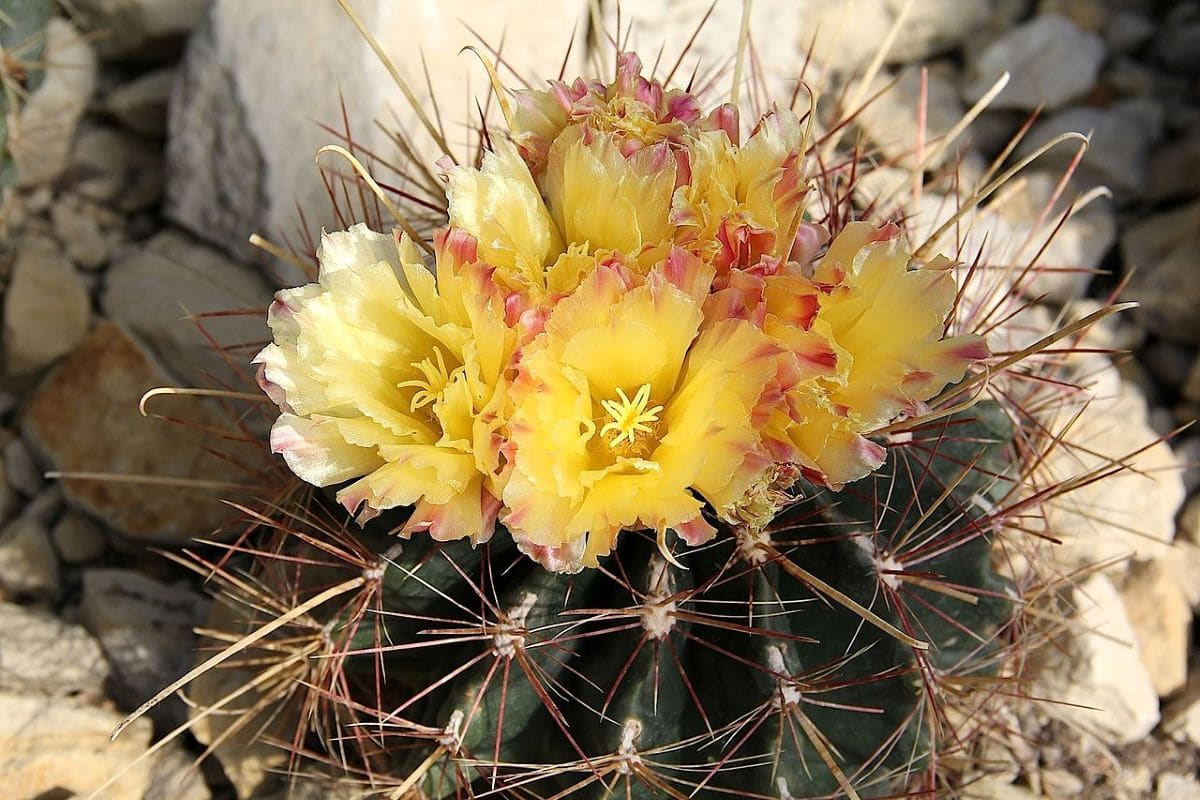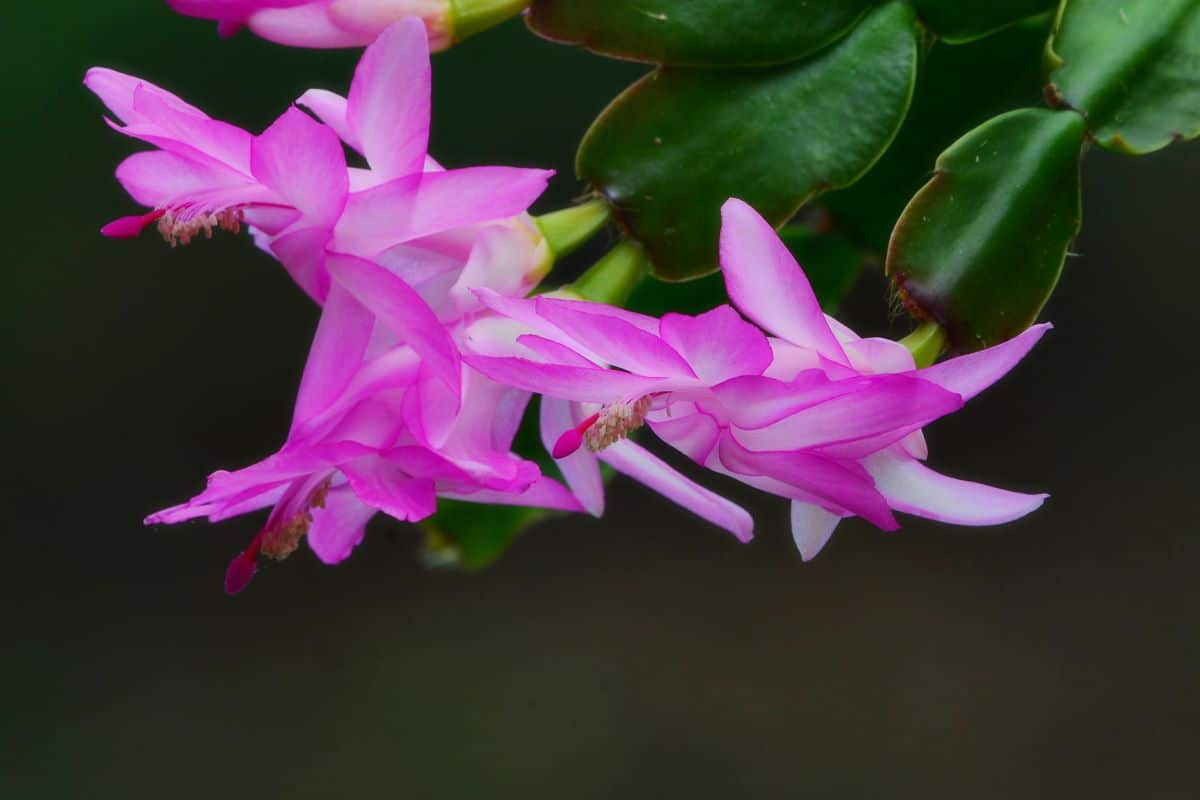
Image - Flickr / cskk // Lobivia arachnacantha
If cacti stand out in something, in addition to their thorns, it is their flowers. They last very little, it is true, but their shape, color and size are just perfect to make our collection of plants look even better. But If we want to have cacti with flowers, it is important to first clarify that all species produce them.
Some take many years, sometimes decades, such as the columnar ones, while there are others that take much less time, such as the Mammillaria. So, now We only have to choose the plants that we like the most.
Astrophytum myriostigma

Image - Flickr / Cerlin Ng
El Astrophytum myriostigma is a type of Astrophytum endemic to Mexico known as the star plant. It has 3-7 very well differentiated ribs, and it reaches about 40 centimeters in height by about 20 centimeters in diameter. Its body is dark green with numerous white dots or tassels. It blooms in spring-summer, and it does so by producing yellow flowers 5 centimeters in diameter. It supports up to 4ºC, and has been put in the sun.
Cleistocactus winteri

Image - Flickr / edgeplot
El Cleistocactus winteri is a climbing cactus endemic to Uruguay and Argentina, sometimes called the rat's tail. It develops cylindrical stems which can measure up to a meter in length, protected with yellow spines up to 1 centimeter long. In spring-summer it produces pink flowers of 5 centimeters in diameter. It needs sun or semi-shade to grow, and supports up to -3ºC.
Disocactus flagelliformis

Image - Wikimedia / Jodelet / Lépinay
Known as the reed cactus, the Disocactus flagelliformis it is an epiphytic species endemic to Mexico. It has cylindrical stems, up to 1 meter long, and protected with spines 5-7 millimeters long. The flowers are pink or red, with a diameter of up to 7 centimeters. It cannot stand the cold, so if the temperatures in your area drop below 10ºC you will need protection. Also, unlike most cacti, D. flagelliformis needs shade or semi-shade, and not sun.
Echinopsis chamacereus

Image - Wikimedia / Juan Carlos Fonseca Mata
El Echinopsis chamacereus It is an endemic cactus from Argentina, with green stems although they darken when exposed to sunlight. They are protected by short white spines, about 1,5 millimeters long, so they are quite harmless. From mid-spring to early summer, it produces red flowers of about 4 centimeters in diameter.. It supports mild frosts, down to -2ºC, and lives both in the sun and in semi-shade.
Epiphyllum oxypetalum

Image - Flickr / Norbert Käßner
El Epiphyllum oxypetalum, called lady of the night, is an epiphytic cactus native to Tropical America. Develop flat stems 2 to 3 meters long as long as you have a stake or other support to climb on. The flowers are white, nocturnal, and measure 25 centimeters in diameter.. It can be both in the sun and in semi-shade, and supports the cold but not the frost.
Ferocactus hamatacanthus

Image - Wikimedia / Peter A. Mansfeld
El Ferocactus hamatacanthus is a globular cactus native to Mexico belonging to the genus Ferocactus. It reaches 60 centimeters in height, and has sharp spines up to 7 centimeters long. Its flowers sprout at the top of the plant, are yellow and measure 5-7 centimeters in diameter.. To flourish it is important that it be placed in a sunny area, because in shade or semi-shade it will not be able to do so. Withstands frosts down to -4ºC.
Hatiora gaertneri

Image - Wikimedia / Peter A. Mansfeld
La Hatiora gaertneri, known as Easter cactus, is an epiphytic species endemic to Brazil that develops flattened and highly branched stems of green color. It can measure up to 1 meter in length, and Its flowers are scarlet, measuring between 4 and 7 centimeters in diameter.. Needs shade or semi-shade, and protection against frost.
Mammillaria baumii

Image - Wikimedia / William Avery
Cacti of the genus Mammillaria they produce very pretty flowers, but these are usually pink in color. La Mammillaria baumii On the other hand, they are yellow, about 3 centimeters in diameter and aromatic. It is an endemic plant of Mexico, and it grows in groups of oval specimens that measure 7 centimeters in height by 6 centimeters in diameter. The spines are short, up to 1,8 centimeters long, and light yellow in color. It supports up to -2ºC, but to be well it needs to be in a sunny place, or at least one where there is a lot of light.
rebutia narvaecensis

Image - Wikimedia / Sida
La rebutia narvaecensis is a type of cactus of the genus Rebutia endemic to Bolivia. It forms small groups composed of stems 2-4 centimeters high covered by white thorns. The flowers are pink, and about 3,5 centimeters in diameter, so when the stems sprout they are practically hidden behind their petals. It supports up to -4ºC, and you have to put it in the sun so that it can develop healthily.
Schlumbergera truncata

Image - Flickr / Alejandro Bayer
La Schlumbergera truncata or Christmas cactus is an epiphytic plant endemic to Brazil widely used as a pendant, both indoors and outdoors. It develops flat, green, spineless stems with a length of up to 60-70 centimeters. During winter it produces white, red, purple or pink flowers, but for this you need protection against frost and a protected exposure from the sun.
Which of these flowering cacti did you like the most?